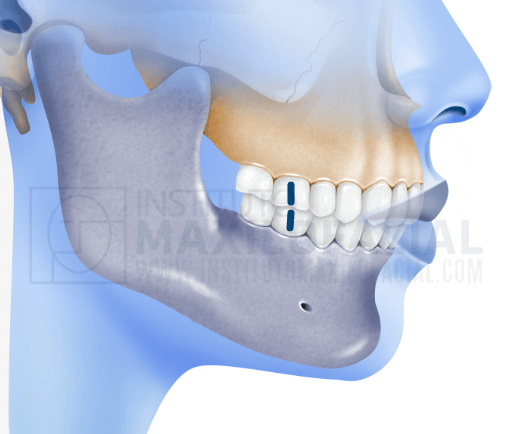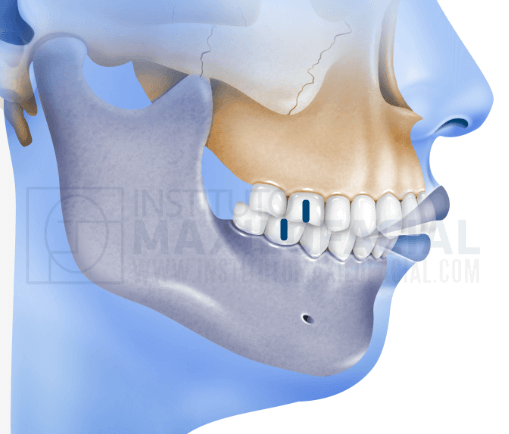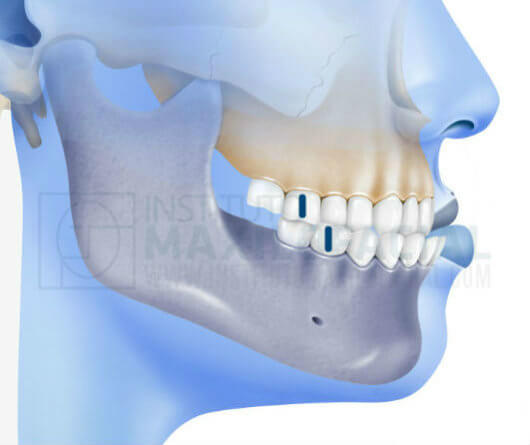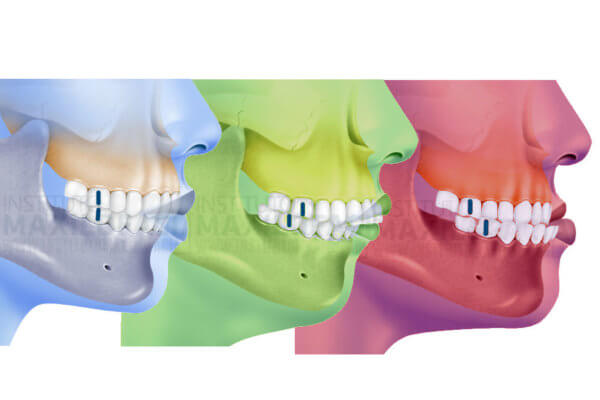Classification of the bite (occlusion) is divided into three main categories: Class I, II and III. This classification refers to the position of the first molars and the way in which the upper ones fit together with the lower ones. This is important because the classification of the bite also indicates whether there is a skeletal discrepancy, and helps determine why the bite does not fit correctly.
The position of the jaws is the bony base of the bite. Therefore, if maxilla and jaw are not well aligned, we are before a malocclusion, and it is necessary to seek a treatment to align them. If left untreated, malocclusions can cause functional problems such as tooth wear, mastication and digestion problems, speech problems, jaw joint (TMJ) pain, sleep disorders and even sleep apnea. In addition, patients with malocclusions have an imbalance in the facial features, which may be more or less noticeable.
Class I

Class I is a normal relationship between teeth, jaw and jaw.
This is the correct occlusion, and it gives the person a well-balanced profile in the anteroposterior plane.
Class II

Class II occlusion occurs when the lower dental arch is posterior (more towards the back of the mouth) than the upper one. In this malocclusion, the upper front and maxillary teeth project more forward than the lower teeth and the jaw.
The profile of a patient with class II has a convex appearance, with a retracted chin and lower lip.
Class II problems may be due to insufficient growth of the lower jaw, excessive growth of the upper jaw or a combination of both. In many cases, class II problems are inherited genetically and can be aggravated by environmental factors such as finger sucking.
In adults, this malocclusion, when skeletal, requires orthodontic treatment combined with orthognathic surgery.
Class III

Class III occlusion is when the lower molars are very forward and do not fit their corresponding upper molars. In this faulty relationship, the lower teeth and the jaw project more forward than the upper and maxillary teeth.
In patients with this malocclusion, the profile has a concave appearance, with a prominent chin.
Class III problems are usually due to excessive growth in the lower jaw, a lack of upper jaw growth, or a combination of both. Like class II oclussion, to correct this malocclusion when it is skeletal, the indicated treatment is orthodontics combined with orthognathic surgery.
Related content:
8 reasons to get orthognathic surgery
Presurgical orthodontic decompensation: getting worse to get better
Video: Orthognathic surgery: aesthetic or functional surgery?








